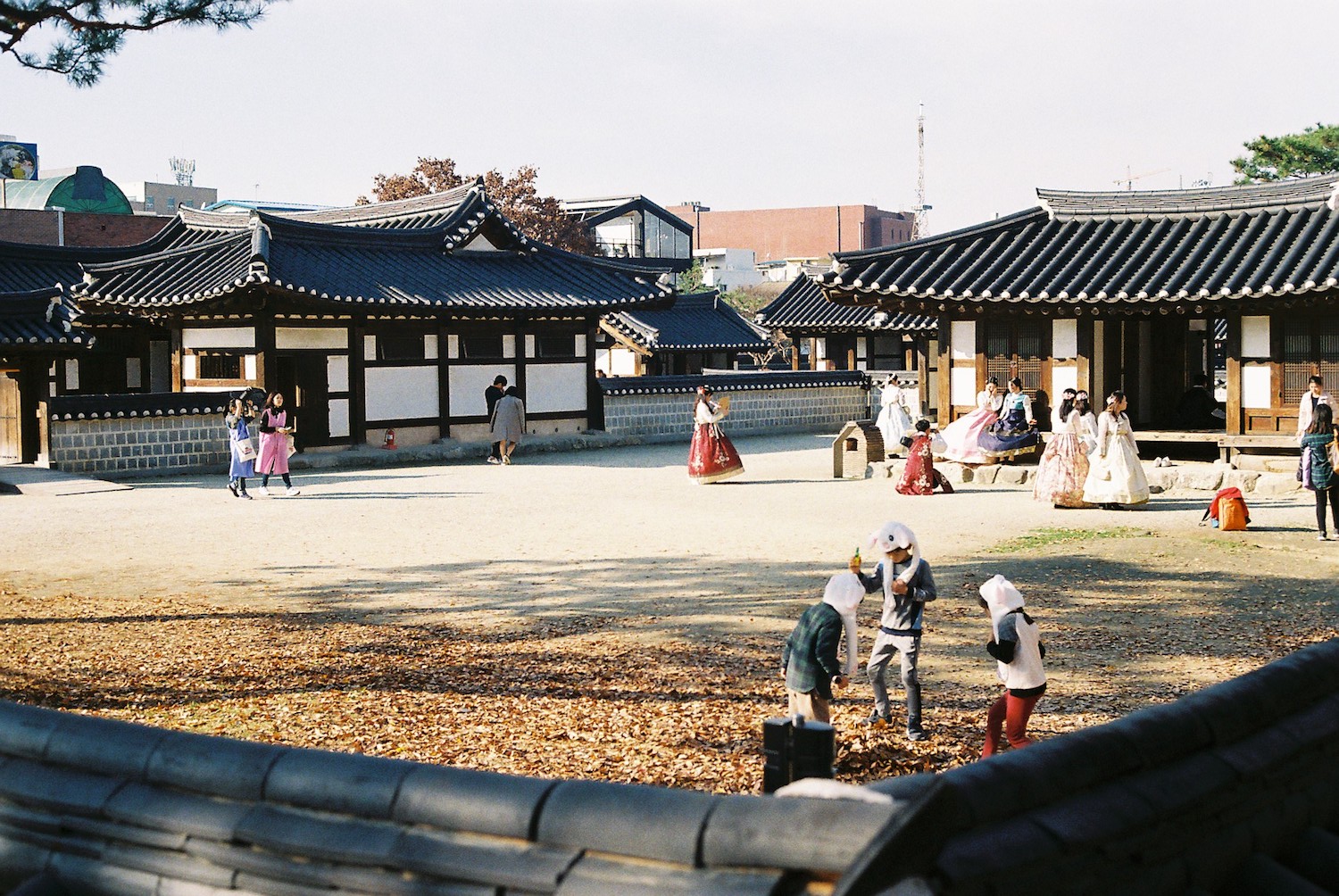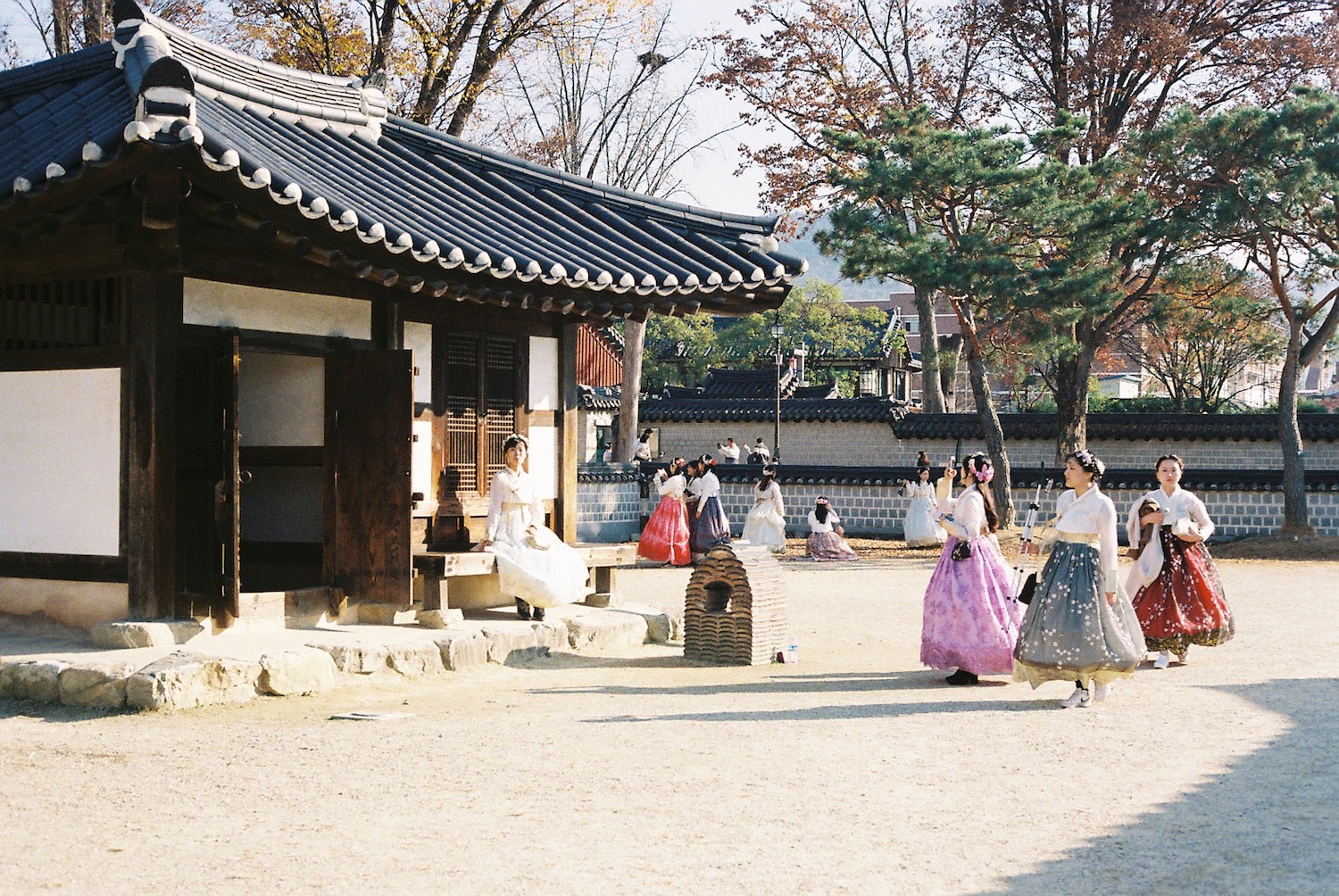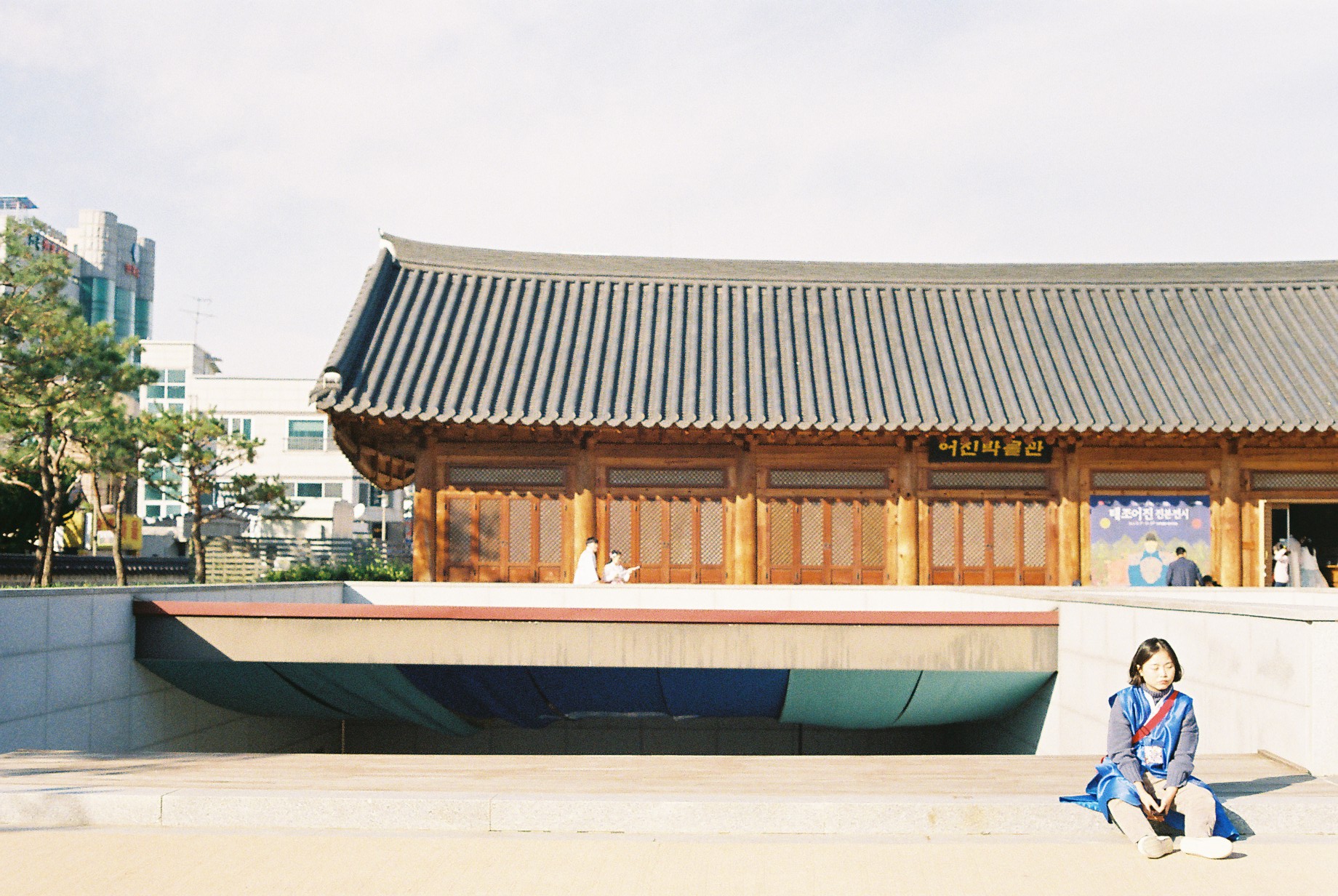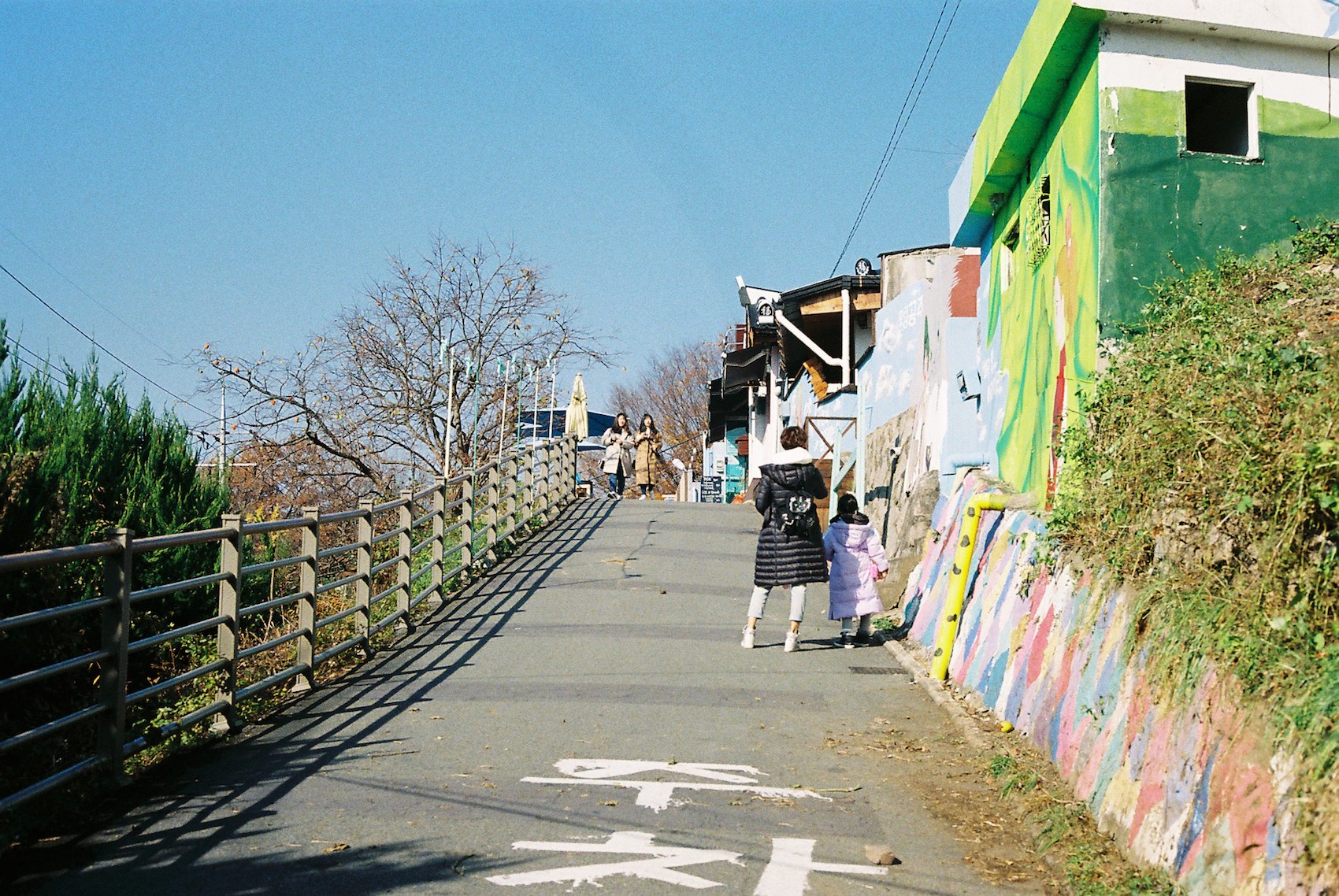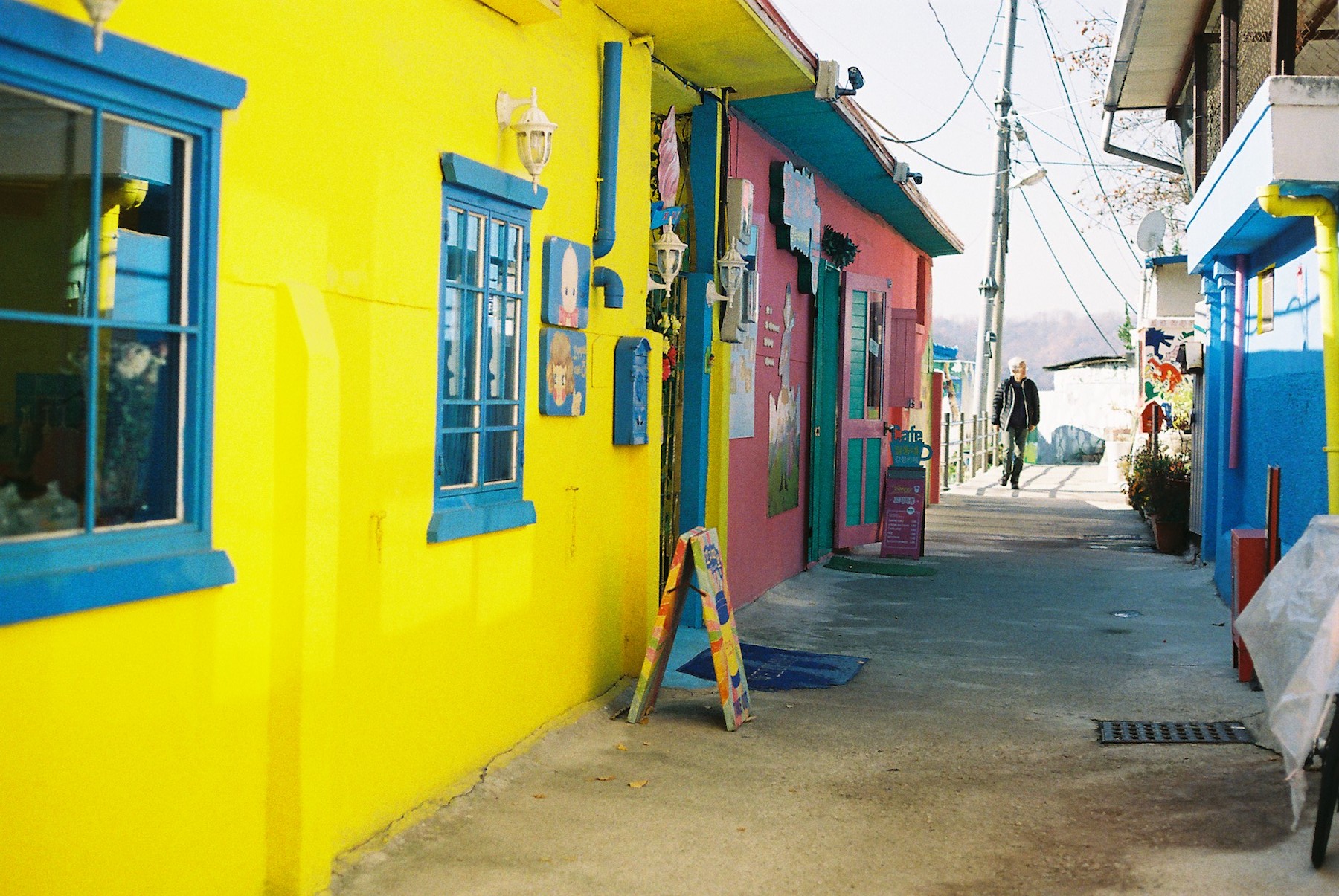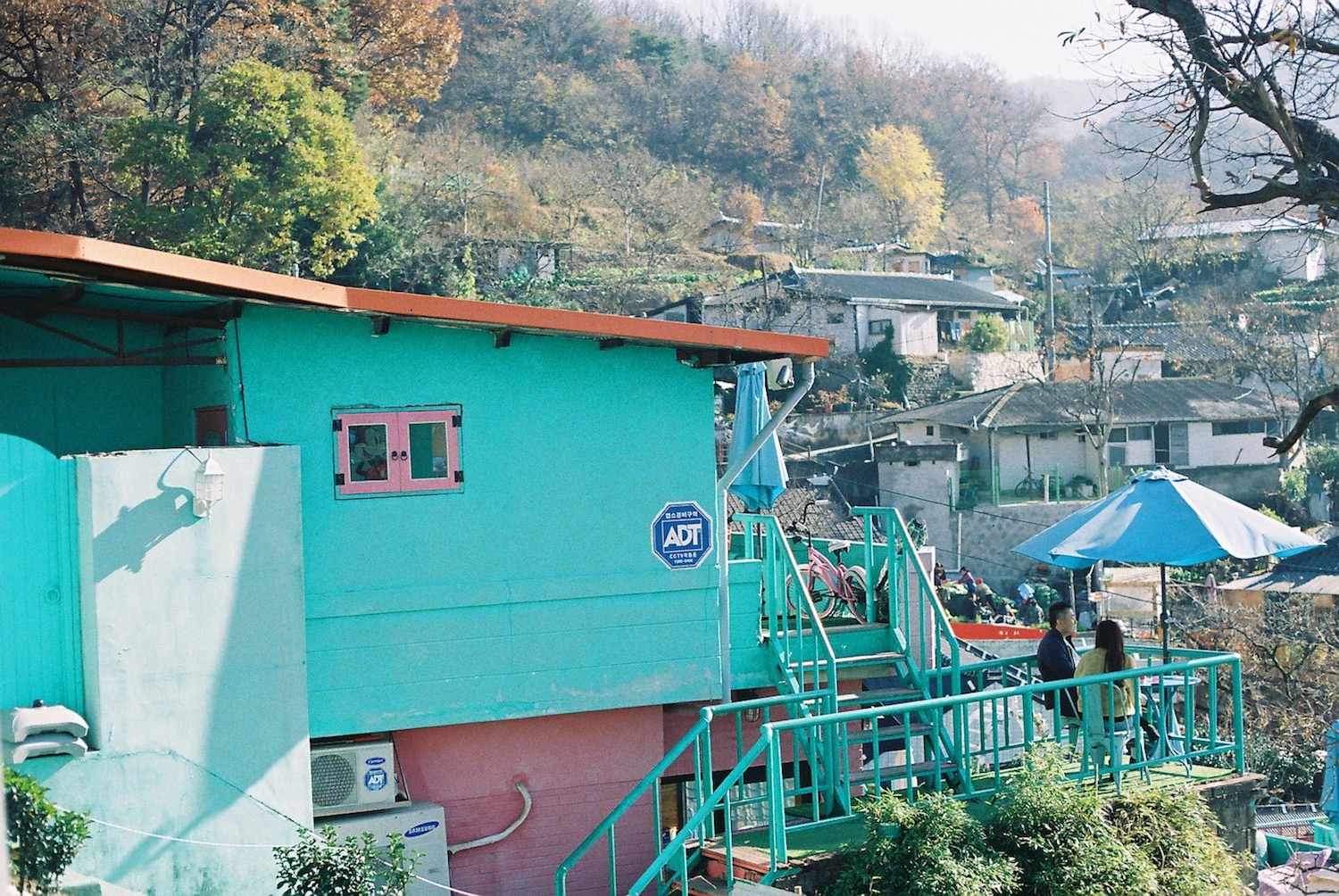韓国の首都、ソウルから南に約230km離れた、全州(チョンジュ)市。ここは、ソウルの人々が理想的な週末を過ごせる場所であり、あらゆる層の観光客を魅了する、韓国で最も魅力的な中規模都市のひとつだ。韓国国内では大人気の観光地であるにもかかわらず、国外では意外と知られていない。全州は韓国で最もメジャーな料理や歴史スポット、そしてクリエイティブなコミュニティを誇る町だ。
2012年、全州市は豊かな食文化遺産とグルメシーンへの影響力が認められ、ユネスコ文化遺産に美食都市として認定された。全州はグルメスポットして知られ、地元韓国では食事をするためだけに、人々が何時間もかけて訪れるほどの人気ぶりだ。韓国旅行中、1日2日スケジュールに余裕があり、ちょっとユニークだけど雰囲気が良く、隠れ家的だが訪れやすい観光地をお探しの方にはおすすめだ。
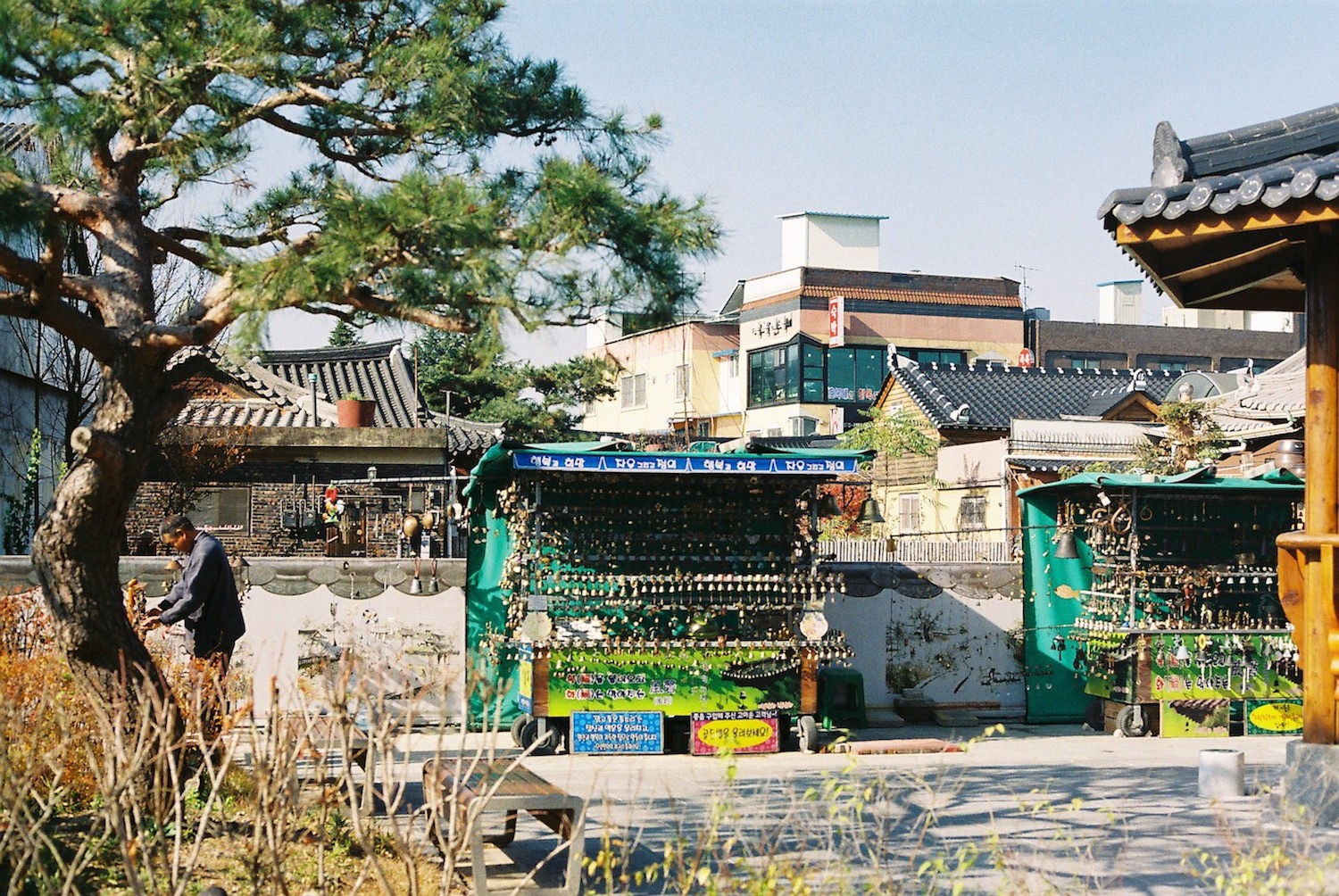
おすすめスポット
全州は、伝統的な朝鮮の建築様式を使用した韓屋や活気に満ちたアーティストの村、巨大ショッピングセンターのある洗練された都心ネットワークに至るまで、多様な文化が同居しており、まるで3つの都市がブレンドされたような町だ。
ほとんどの観光客が最初に訪れるのが、全州韓屋村(チョンジュハノッマウル)。韓屋村は、800軒を超える韓国の伝統的な家屋が当時の姿のまま立ち並ぶミュージアムで、まるでそこだけ時間が止まってしまったかのようだ。韓国人に大人気の保護地区は、週末になると観光客が伝統的な民族衣装に身を包み、絶品グルメに舌鼓を打ち、撮りきれないほど写真を撮ってSNSなどに投稿するなど、にぎわいを見せる。最近では、見学するだけでなく、多くの韓屋敷が民宿などといった用途にも再利用されている。
- All photos by Lucy Dayman
韓屋村を探索した後は、隣接する丘を登って色とりどりのアーティスト村「梨花洞壁画村(イファドンピョックァマウル)」を散策してみよう。壁画村は韓屋村よりも静かで、アーティストやカフェオーナーのコミュニティ、工芸品店、そして不定期営業のゲストハウスなどが立ち並ぶ。歩道から屋根にいたるまで、あらゆる場所が活気のある絵画や大胆な色彩で覆われ、時折有名人の肖像画などもある。壁画村は没入型のアートギャラリーであり、写真撮影にうってつけの場所。また、至極のコーヒーで一息つく際の背景としては、最高にユニークな場所だ。岩だらけの急斜面に沿って建物が並んでいるため、少々アクセスしにくいが、坂道を制覇したあとに飲むコーヒーは、また格別だ。
壁画村は昔からずっと活気に満ちた創造拠点だったというわけではない。町の高台にあり、月の眺めが良いという噂もあったことから、地元民から「タルトンネ(月の村)」と呼ばれていたこともある。水原(スウォン)や釜山(プサン)、首都ソウルの地域と同じく、タルトンネは朝鮮戦争後に難民が定住したことから始まったコミュニティだ。町を美しくするため、そしてスラム街という認識を覆すため、近年アーティストを雇って建物を装飾するようになった背景を持つ。
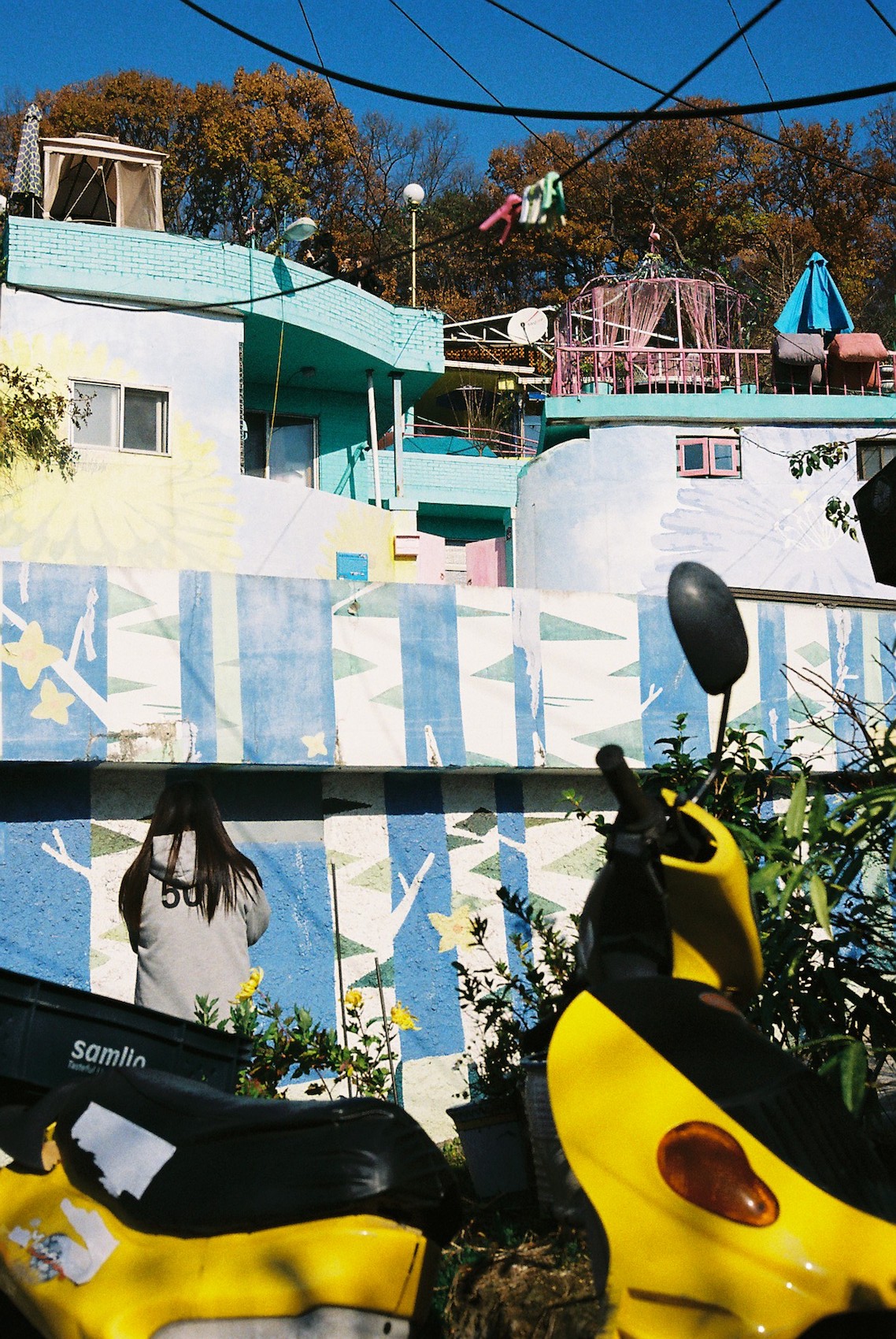
おすすめグルメ
全州は韓国きってのグルメスポットだ。韓国でもっとも有名な料理の1つ、ビビンパ発祥の地でもある。ビビンパは白飯とキムチ、ナムル、肉を絶妙なバランスで混ぜ合わせ、卵をトッピングした栄養満点でシンプルな料理だ。全州ではビビンパ専門店が軒を連ねており、それぞれの店が嗜好をこらした料理と山盛りの漬物を提供している。かつては王室のおやつで、食事と食事の合間に王に提供されたと言われている。ビビンパは順応性のある食べ物で、長い時をかけてさまざまな世代や階級に伝わり、やがて全州の食文化で主食の座を得るようになった。
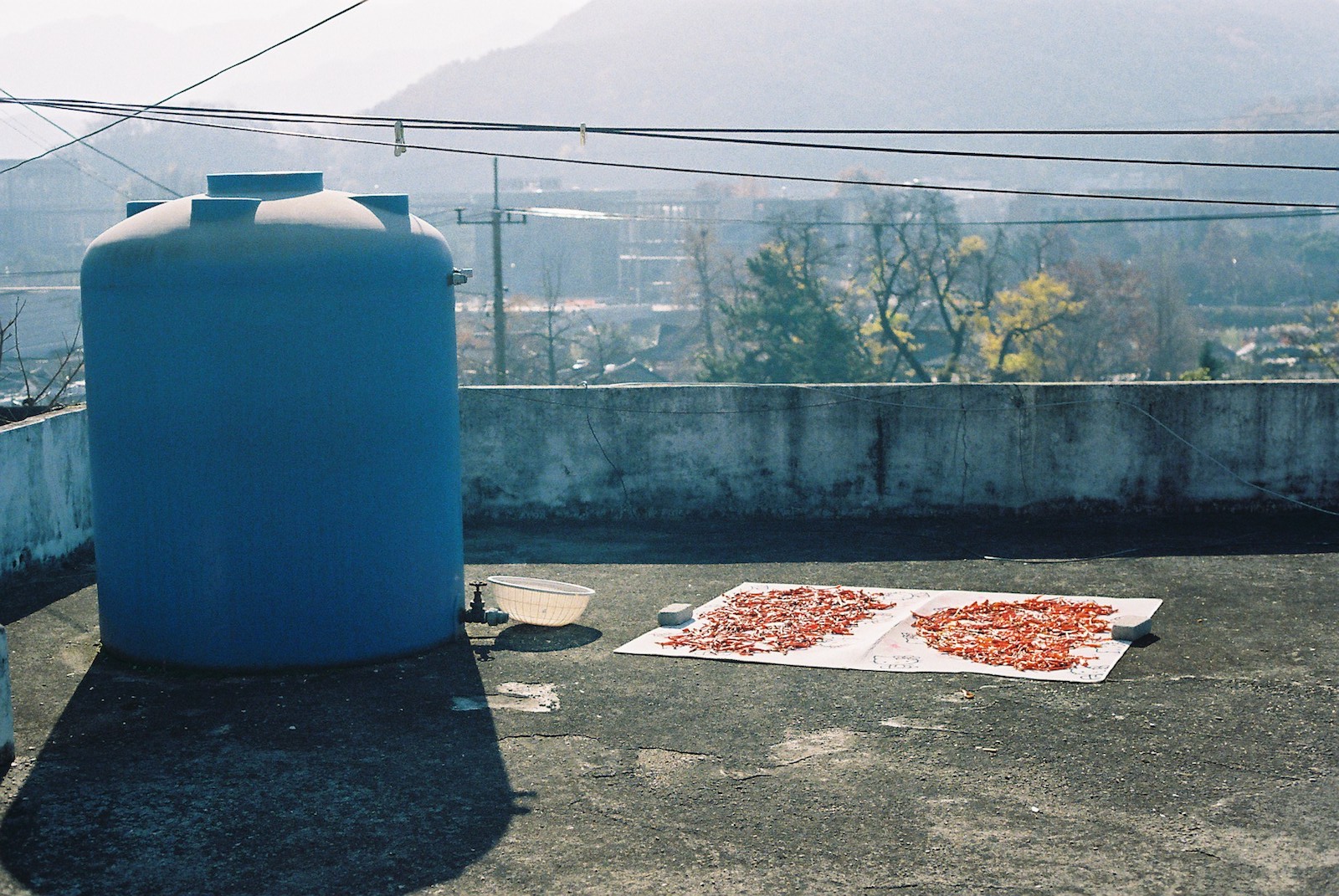
ちょっと甘いものが食べたくなったら、この町で一番人気のB級スイーツ「チョコパイ」で決まり。チョコパイはPNBベーカリーチェーンの人気商品で、ストロベリージャムとバタークリームをチョコケーキで挟み、さらにパリパリのチョコレートでコーティングした、手のひらサイズのケーキサンドだ。
韓国の人はお酒好きだが、全州でもそれは同じだ。最も人気があるのは、「マッコリ」。発酵米で作った乳白色の発泡酒のようなマッコリは全州でも大人気で、市内にはマッコリバーが集まる「マッコリタウン」が7つもある。
マッコリバーで食事や飲み物を注文する場合、かなりユニークな手順を踏むことになる。日本の居酒屋にある「お通し」の豪華版といった感じで、食事は無料のオプションとして提供される。基本的に、大きな銅製のケトルに入ったマッコリを注文すると、食事代は無料。なんともおおらかなシステムだが、食べ物を追加する時はマッコリをおかわりしなければならないため、飲みすぎに注意が必要だ。
お酒は苦手、という方は、ハーブとシナモンを使った、全州独特の地酒「母酒(モジュ)」をお試しあれ。母酒はオリジナルのマッコリよりもアルコール度数はやや低く、マッコリに生姜、ナツメ、甘草、朝鮮人参、クズウコン、シナモンパウダーなどのハーブを加え、茶色く濁るまで煮詰めたもの。見た目はよくないが、薬効があると言われており、地元の人々は「これがあれば、長く厳しい韓国の冬を、風邪をひかずに乗り切ることができる」と話す。また、お酒に弱い方が韓国の発酵飲料の世界を初体験するなら、母酒は入り口として最適だ。
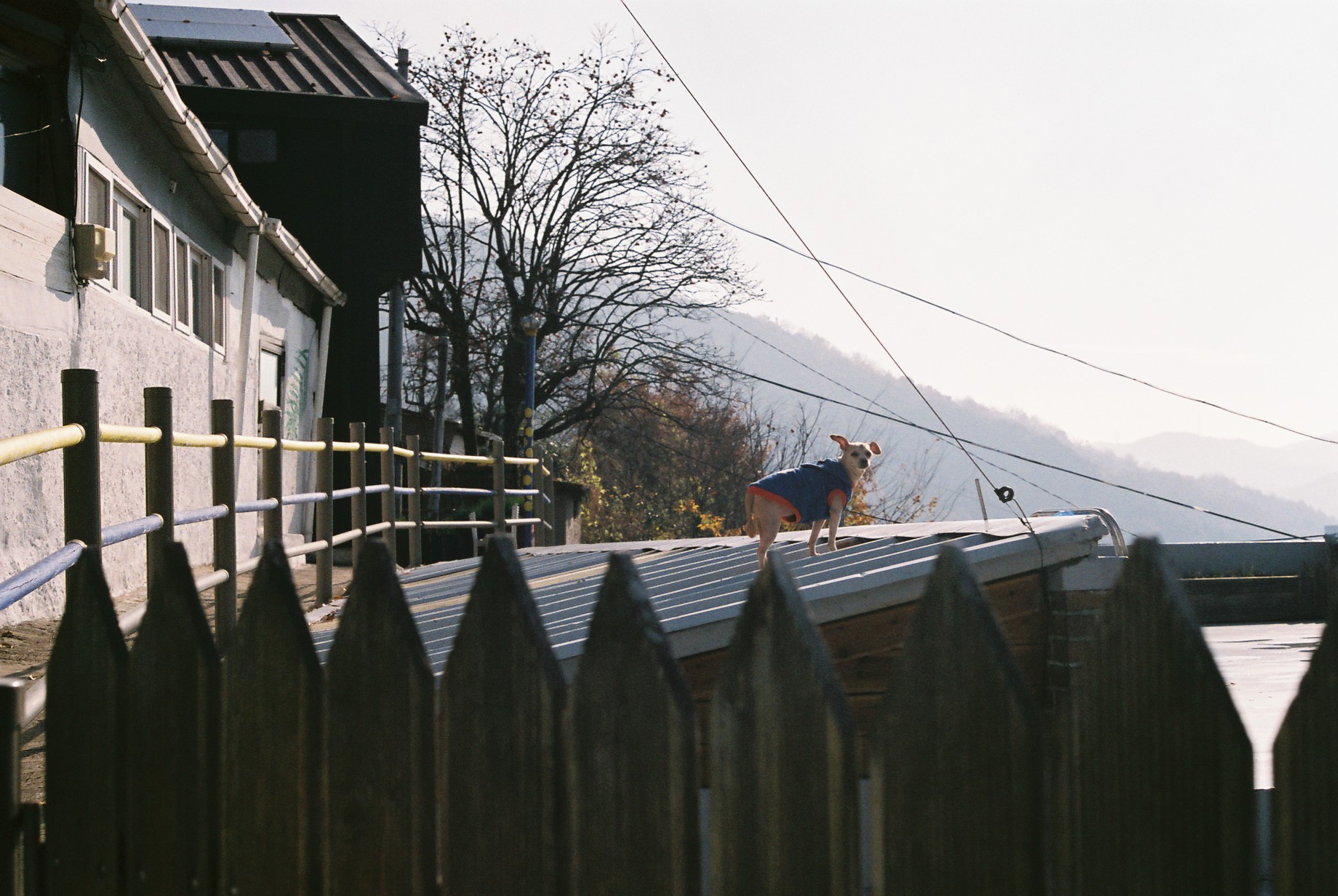
行き方
ソウルから全州(チョンジュ)までの所要時間は、車で3時間から4時間程度(交通量によって前後する)。公共交通機関を利用するなら、バスもしくは電車。交通費を節約するなら、バスがおすすめなので、地下鉄駅の高速バスターミナルへ。高速バスターミナルにはさまざまなチケットがあるが、その中から全州行きのチケットを選ぶ。会社によっても違うが、全州までは大体1万4,000ウォン(約1,400円)から1万8,700ウォン(約1,800円)程度だ。そこから全州高速バスターミナルまでバス一本で到着する。
時間がない場合は、電車のほうが良いだろう。一番速い急行電車で、龍山(ヨンサン)駅から全州駅まで所要時間は約2時間半、料金は3万2,900ウォン(約3,200円)だ。うまく計画を立てればソウルから日帰りも可能だが、全州は訪れた人に「もっとここにいたい」と思わせる町なので、ご注意を!
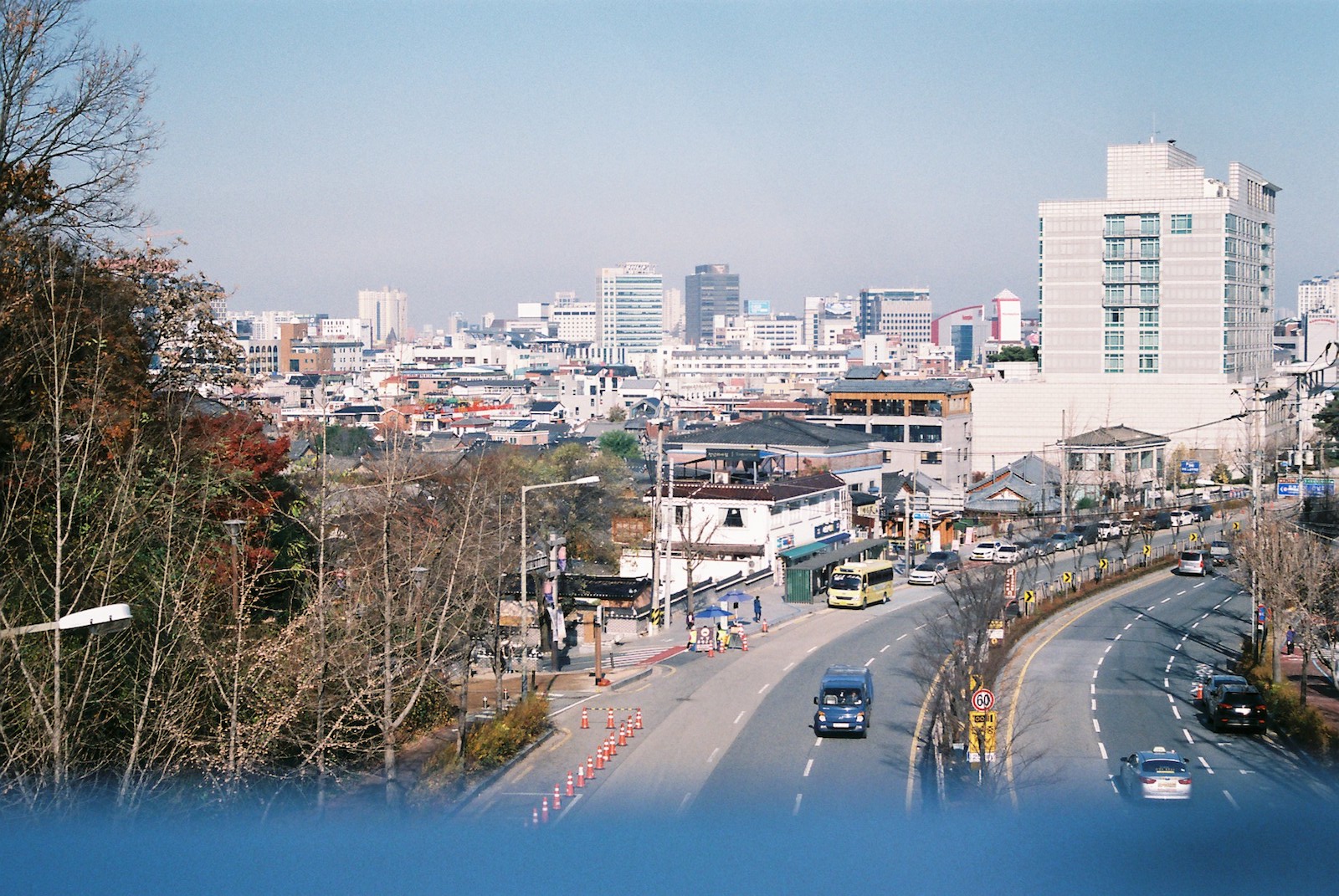
—
All photos by Lucy Dayman
—
Lucy Dayman | ルーシー・デイマン
オーストラリア生まれ。2016年、オーストラリア・メルボルンでのカルチャー・音楽雑誌の編集の仕事を辞め、日本で旅をしながら仕事を始める。フリーランスライターとしての仕事と旅の傍ら、フィルム写真を撮影している。
Instagram: @lucy.dayman.
HP: lucydayman.com
An ideal weekend from Seoul, Jenju is one of Korea’s most fascinating medium-sized cities that has plenty to offer travellers of all types. An incredibly popular spot for domestic tourists, but relatively unknown outside of Korea, Jeonju is home to the nation’s most famous foods, historical neighbourhoods and creative communities.
In 2012 the city was acknowledged by UNESCO for being an important City of Gastronomy thanks to its rich culinary legacy and influence on the food scene. Jeonju is so well known for is culinary prowess that many Koreans travel for hours just to eat here. If you’ve got a day or two up your sleeve and are looking for somewhere unique, but welcoming, a well-kept secret but an accessible tourist destination, look no further.
What to see
Jeonju is a city of juxtaposed cultural diversity, from the traditional hanok houses, the ramshackle vibrantly colored artists’ village, to the slick inner-city network of mega shopping centres, it’s almost like three cities blended into one.
The first point of call for most visitors is Jeonju Hanok Village, a living breathing museum of over 800 traditional Korean hanok houses seemingly frozen in time. Incredibly popular with local tourists, this preserved corner of the city is bustling on the weekend full of out of town guests dressed in classic hanbok dresses, sampling the city’s best food and posting for an endless barrage of photographs. In this area, you’ll also find many repurposed hanok houses that now work as guesthouse style accommodations.
After you’ve explored the hanok quarter of the city, make your way up the neighbouring hill to explore the multi-coloured shantytown that is Jaman Mural Village, aka Artists Village. Rather peaceful compared to hanok village, Jaman Mural Village is home to a community of artists and cafe owners, craft stores and the occasional guesthouse. Covered from the footpath to roof in vibrant images, bold colours and the occasional celebrity portrait, this area is an immersive art gallery, an incredible place for a photo shoot, and the most unique backdrop for some time out with a masterfully-brewed coffee. Built along a rocky incline, it’s not the most accessible place to get to but conquering the climb makes the coffee all that sweeter.
Not always such a lively hub of creativity, Jaman Mural Village was once what the locals would call a daldongnae ‘moon village’ named so because of its location, above the city, which some say offers a better view of the moon. Also seen in other areas of Korea including Suwon, Busan, and the capital of Seoul, daldongnae communities were home to refugees who squatted here following the Korean War. Artists were employed to paint the buildings as a way to beautify the cities and force people to rethink their assumptions around slums.
What do eat and drink
Jeonju is Korea’s foodie capital. It’s home to one of the nation’s most famous dishes, bibimbap (mixed rice) a hearty, but simple dish of-of perfectly balanced rice, kimchi, sautéed vegetables, meat and topped with an egg. In Jeonju, there’s no shortage of bibimbap restaurants, each offering a unique take on the dish and plenty of pickled sides. It’s said that this was once a royal snack, served to the king between meals. The dish’s adaptability meant that over time it was passed through the city’s generations and classes becoming a staple meal on the Jeonju menu rotation.
For something a little sweeter, you can’t go past choco pie, the city’s most popular naughty snack. A signature item of the PNB Bakery chain, choco pie is a palm-sized cake-sandwich made from two chocolate cake filled with strawberry jam and buttercream and coated in a crisp layer of chocolate.
Just like in wider Korea, the people of Jeonju love to drink. Makgeolli, the milky, off-white, almost fizzy fermented rice beverage is the number one drink in town. Jeonju loves makgeolli so wholeheartedly that there are seven ‘makgeolli towns’ within the city, a strip of makgeolli bar clustered together.
The makgeolli bar food and drink ordering system is rather unique. It’s almost like a more extravagant version of otoshi in a Japanese izakaya, food is served as like a complimentary option. Basically, you pay for the large copper kettles of makgeolli and food is free. The system is generous but can be a little dangerous, because if you want to eat more, you have to drink more.
For those with a little sweet-tooth, keep a lookout for Jeonju moju, a unique local liquor made with herbs and cinnamon. A little less potent than original makgeolli, Jeonju moju is boiled down makgeolli that’s mixed with herbs like ginger, jujube, liquorice root, ginseng, arrowroot, and cinnamon powder until muddy brown. It doesn’t look fantastic, but it’s said to be rather medicinal, with locals claiming it prevents colds in the notoriously long and hard Korean winter. Also, it’s an excellent foray into the world of Korean fermented drinks for those who can’t really drink alcohol.
How to get there and getting around
From Seoul, the journey to Jeonju will take around three to four plus hours depending on the traffic. If you’re travelling by public transport, bus and train your options. If you’re looking to save money, go for the bus. Head to Express Bus Terminal subway station. At the Express Bus Terminal, you’ll find the ticket book, you can buy a ticket on the spot for around 14,000 – 18,700 KRW (1,800 yen) depending on the provider. The bus will get you to the Jeonju Express Bus Terminal.
If you’re more time poor, the train will be the best bet. Korea Train Express is the quickest way to get there, from Yongsan Station to Jeonju Station it takes about two and a half hours and costs 32,900 KRW (3,300 yen). If you’re an expert planner, Jeonju is a do-able day trip from Seoul, but be warned; once you get there you won’t want to leave!
—
Lucy Dayman
Originally from Australia, in 2016 Lucy left her job as an editor of a culture and music magazine in Melbourne to live, work and travel in Japan. Between freelance writing and traveling, she’s been dabbling in film some very amateur film photography, which you can check out on her Instagram: @lucy.dayman. Check out her other writing work and photos at lucydayman.com
